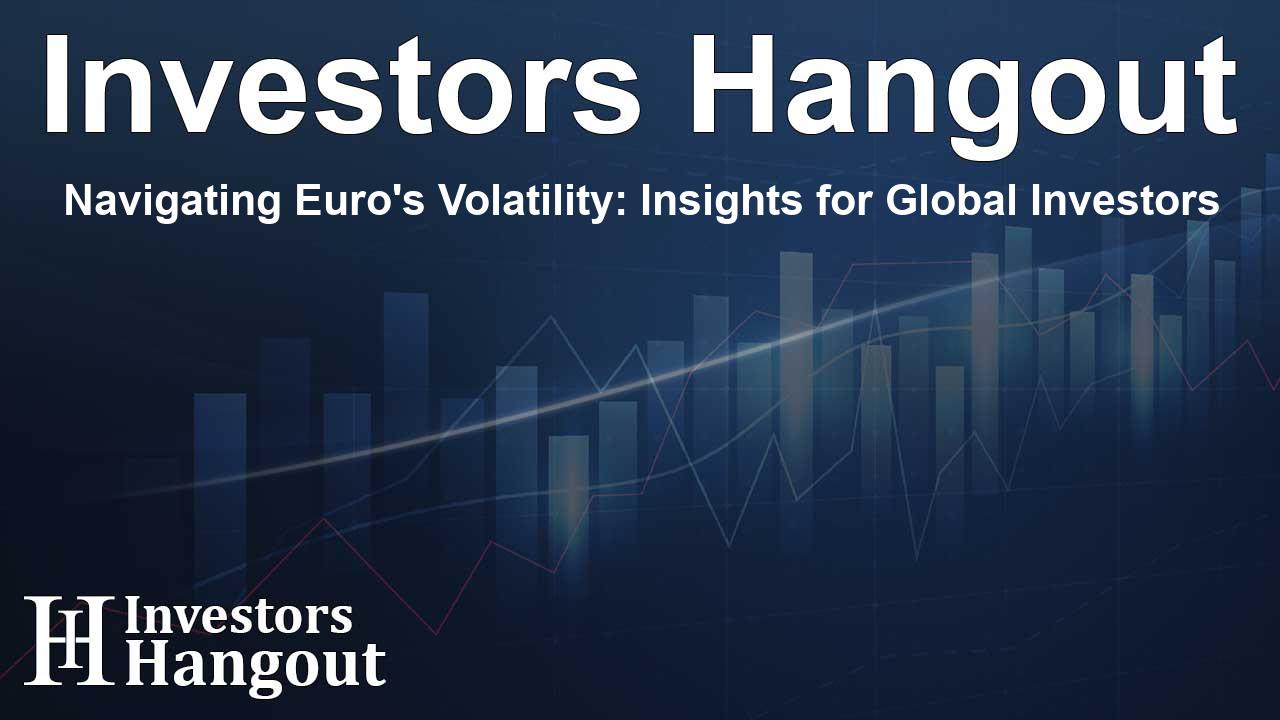Navigating Euro's Volatility: Insights for Global Investors

Understanding the Current Euro Situation
The euro is experiencing significant turbulence, and analysts are closely watching how it could influence the global financial landscape. As the euro approaches what many are terming its worst month since early 2022, market participants are increasingly anxious about what this means for investment strategies.
The Factors Driving Euro Weakness
Investors are noting that the euro has plunged approximately 3.8% against the dollar recently, and several factors contribute to this decline. Key among them are issues surrounding trade tariffs proposed by government officials, lingering economic weaknesses within the eurozone, and geopolitical tensions, particularly the ongoing conflict between Russia and Ukraine.
The Impact of U.S. Policies
The implications of U.S. economic policies are paramount in this scenario. As the dollar strengthens, buoyed by robust economic forecasts, the euro continues to face downward pressure. This unique intersection of events has sparked debate among market analysts, many of whom are questioning whether the euro will breach the critical $1 threshold.
Investor Sentiment and Market Predictions
Market sentiment remains mixed; some investors are concerned about rising inflation, which could complicate matters for the dollar as well. The uncertainty around currency fluctuations is heightening the potential for volatility across various asset classes. Experts within the financial sector suggest that the potential for unexpected shifts in currency valuations could disrupt well-established trading strategies that favor European exports.
The Euro-Dollar Dynamics
The relationship between the euro and dollar is of paramount importance in global markets. This relationship influences multinational corporations' profit margins, specifically those involved in commodity imports and exports. Economic experts, such as Themos Fiotakis from Barclays, underscore that if the euro continues to decline, nations that heavily depend on assessments like that of the euro may experience critical reevaluations of their own currency strength.
Potential Global Consequences
For countries closely linked to trade with Europe, like China and South Korea, fluctuations in the euro could prompt them to consider adjustments in their currency valuations. Additionally, the UK pound has also shown signs of sensitivity to these fluctuations, further complicating predictions in the forex landscape.
The Role of Investor Strategies
The current climate is ripe for various trading strategies, as many investors reevaluate their positions in anticipation of eventual shifts in currency values. UBS strategist Alvise Marino points out that the distorted perceptions regarding near-term euro trading could lead to considerable recalibrations in market dynamics.
Hedging Against Uncertainty
In response to the elevated risk levels, many traders are looking toward derivatives as a tool for mitigating potential losses. Such strategies involve contracts that provide payouts in cases where the euro experiences heightened volatility over the coming year. This can potentially offer investors a safety net in an unstable market environment.
What Lies Ahead?
Looking into the future, long-term asset managers provide contrasting views on where the euro-dollar exchange rate is headed. While some predict a descent to about 99 cents within the next few months, others suggest a possible recovery closer to $1.16 by 2025, driven by a rebound of business activity in the eurozone.
Market Reaction to Economic Signals
As the European Central Bank engages in discussions about potential interest rate cuts, immediate market responses indicate a weakening euro. Simultaneously, an evolving narrative regarding U.S. inflation and resulting fiscal policies is also beginning to take shape, further complicating the outlook for both currencies.
Frequently Asked Questions
What does recent euro weakness imply for investors?
The current decline of the euro suggests potential risks and opportunities for investors, requiring them to consider currency volatility when making decisions.
How do trade tariffs affect the euro?
Trade tariffs, especially from the U.S., can create significant pressure on the euro by impacting trade balances and investor sentiment.
What strategies can mitigate currency risk?
Investors can use derivatives contracts to hedge against potential euro volatility, safeguarding their investments during uncertain times.
Are there geopolitical factors influencing the euro?
Yes, geopolitical tensions, such as those concerning the Russia-Ukraine situation, can contribute to fluctuations in the euro's value and stability.
What is the forecast for the euro in the coming months?
Market analysts hold divided views, with projections ranging from a decline to parity with the dollar to potential rebounds based on economic recovery indicators in Europe.
About Investors Hangout
Investors Hangout is a leading online stock forum for financial discussion and learning, offering a wide range of free tools and resources. It draws in traders of all levels, who exchange market knowledge, investigate trading tactics, and keep an eye on industry developments in real time. Featuring financial articles, stock message boards, quotes, charts, company profiles, and live news updates. Through cooperative learning and a wealth of informational resources, it helps users from novices creating their first portfolios to experts honing their techniques. Join Investors Hangout today: https://investorshangout.com/
Disclaimer: The content of this article is solely for general informational purposes only; it does not represent legal, financial, or investment advice. Investors Hangout does not offer financial advice; the author is not a licensed financial advisor. Consult a qualified advisor before making any financial or investment decisions based on this article. The author's interpretation of publicly available data shapes the opinions presented here; as a result, they should not be taken as advice to purchase, sell, or hold any securities mentioned or any other investments. The author does not guarantee the accuracy, completeness, or timeliness of any material, providing it "as is." Information and market conditions may change; past performance is not indicative of future outcomes. If any of the material offered here is inaccurate, please contact us for corrections.